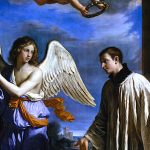Paris’s Musée Marmottan Monet, which owns the world’s largest collection of Monets, is now presenting an exhibition of Eugène Boudin (1824–98). Monet praised Boudin, who was his senior by sixteen years, as the man who taught him everything he knew. As an adolescent, Monet turned out caricatures, and the exhibition includes a selection of Monet’s juvenilia in this genre. Boudin encouraged the young Monet to turn to landscape and paint outside in the open air. Boudin, influenced by Dutch landscape painting and the Barbizon School, was one of the first French painters to work outside. “Three strokes of a brush in front of nature is worth more than two days at an easel,” he asserted in the 1850s. Most of the show’s pictures come from the private collection of Yann Guyonvarc’h, but there are also paintings from the Marmottan Monet’s permanent collection, the Musée d’Orsay, the Musée des Beaux-Arts d’Agen, and the Musée d’art moderne André Malraux Le Havre. The exhibition is divided into eight sections, starting with Boudin’s early landscapes and ending with his later seascapes, including several from his two visits to Venice.
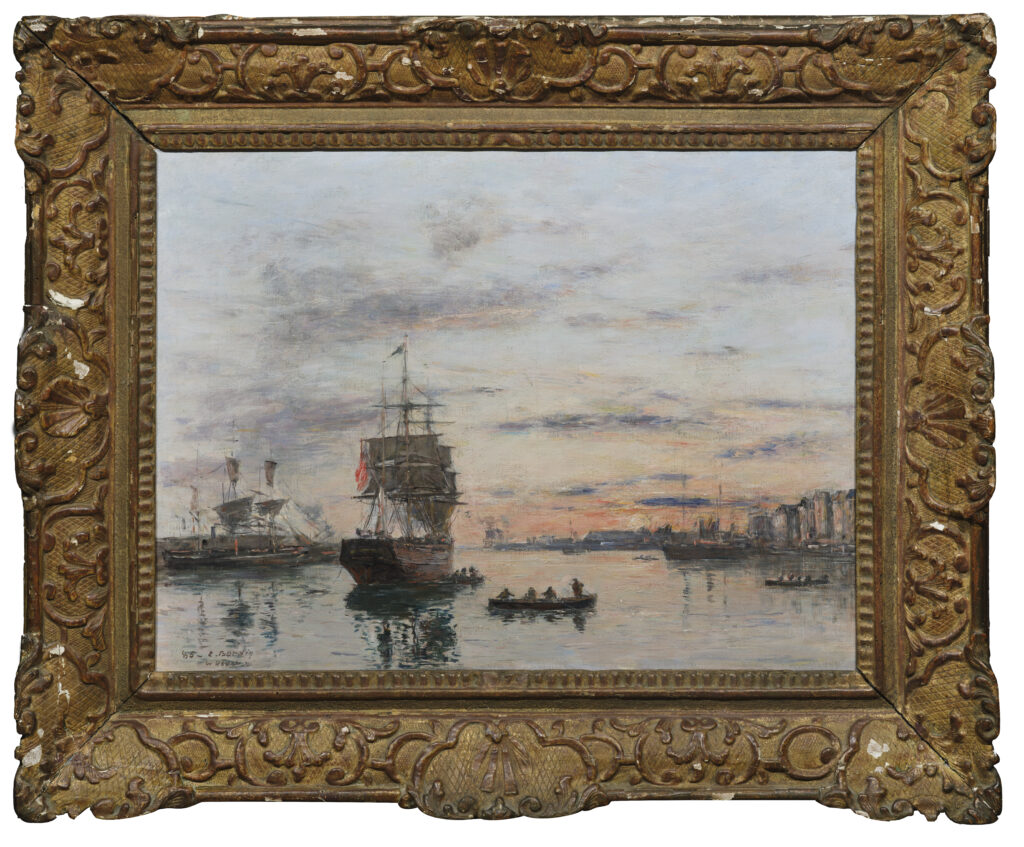
Boudin, praised by Corot as the “king of the skies,” never pretended to be an Impressionist, even though his paintings appeared in the First Impressionist Exhibition of 1874. He was born in Honfleur, right on the estuary of the Seine, his father a harbor pilot. At ten, the child Eugène worked on a steamboat between Honfleur and Le Havre, where his family moved in 1835, when Eugène’s father opened a shop there selling stationery and picture frames. The sea was in Boudin’s blood, and it dominated his art, even if he admitted his vocation was to paint the sea and its beaches rather than to sail on it.
Le Havre opened its first museum in 1845, and Boudin befriended its first curator, who organized exhibitions of Parisian artists such as Jean-François Millet and Eugène Isabey. Isabey ended up employing Boudin in his studio in Paris in 1850 and sent him to the Louvre as a copyist. Boudin also traveled and studied in northern Europe and in Belgium. He sought to give an impression of spontaneity in his painting, making him a pioneer of what is now called Impressionism. At first, his originality didn’t pay off in sales. A collector in Le Havre said he didn’t see the point of Boudin and compared his art to treading in muddy ditches. Boudin later thought back to his time in Le Havre with bitterness, even though he made brief visits there throughout his life to visit family and paint harbor scenes, such as the Le Havre Before Port (1885), which features a handsome ship and a little rowboat under a vast, cloudy sky. His Festival in the Honfleur Basin (1862) shows a brighter, bluer sky with French tricolor flags. Boudin presented it in the Salon of 1863. Along with pictures by Manet, Renoir, and Whistler, Boudin’s painting was rejected by the crowds—unjustly so, according to Henri Fantin-Latour, who remarked that the work wasn’t given the acclaim it deserved.
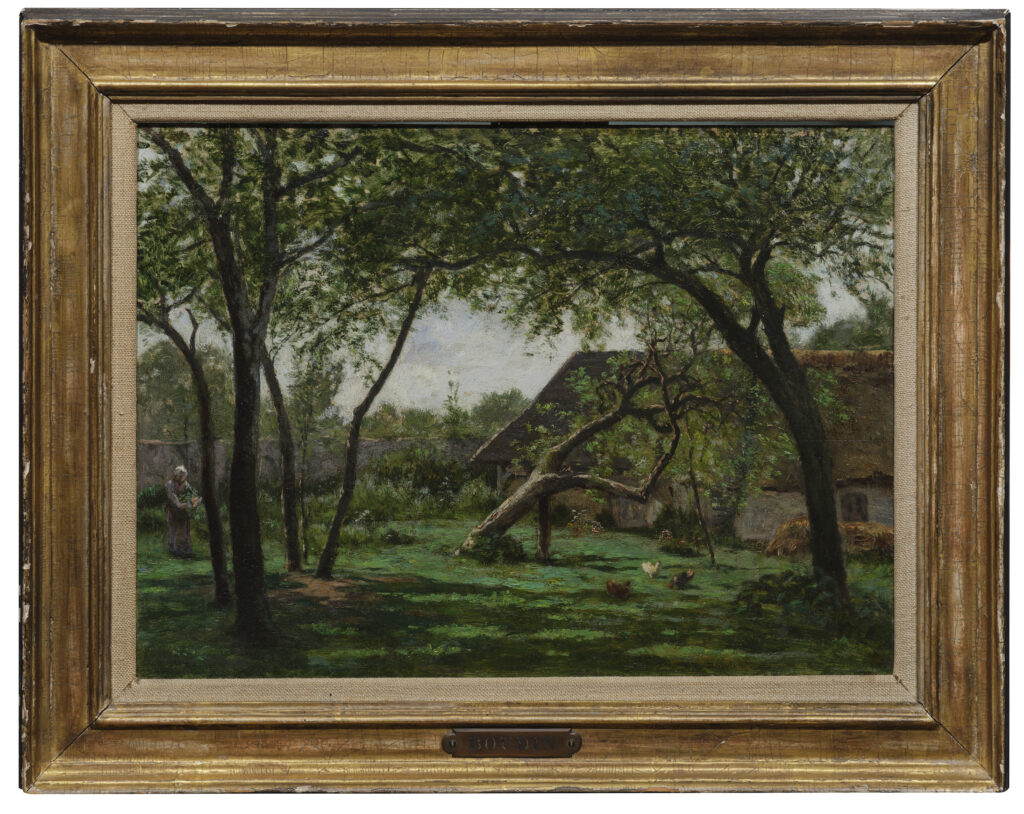
Given his love of Dutch painting of the past, it was natural that Boudin was excited to meet a living Dutch painter, Johan Barthold Jongkind (another student of Isabey’s). In the end, Jongkind’s brilliant shades had more influence on Monet than on Boudin, who preferred subtlety, as in his melancholic Little Farm in Honfleur (1856–60).
Over the course of his life, Boudin turned more and more for subject matter to the new bathing beaches, Deauville and then Trouville, that emerged in the 1850s. In 1870, Monet’s family joined Boudin and his wife Marie-Anne Guèdes at Trouville. The exhibition includes a Monet, On the Beach at Trouville, from that year, just before the two painters fled France during the Franco-Prussian War: Boudin to Belgium, Monet to England. Boudin’s Deauville, Juliette Under the Tent, so similar to Monet’s painting as to seem almost like a pendant, is nonetheless dated twenty-five years later, to 1895. Seeing these two pictures, one can imagine the sea and the distant voices of beachgoers in one’s ears. Boudin rarely depicted people close up. His preference was for figures, their faces as misty as the clouds against the vast turquoise sky, as in Meeting on the Beach (1866). His beach scenes were only fully appreciated, however, in the twentieth century—the fashion designer Jeanne Lanvin bought five of them. Boudin visited Trouville every year and purchased a house in Deauville, and it was there that he died. View of the Port of Trouville at Sunset (ca. 1885–90) is a magical one for those of us who enjoy evening scenes.
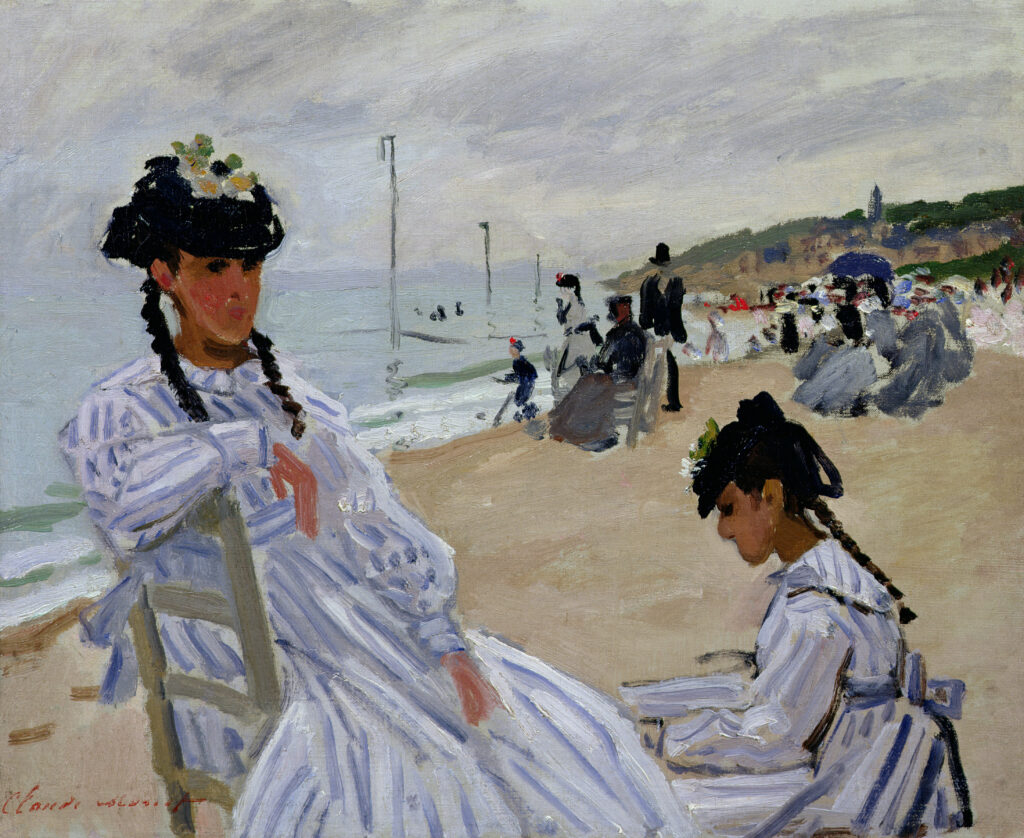
Boudin also painted many marine pictures of Brittany, which he had discovered in 1857. The “British” part of France, Brittany was settled by Celts from Wales and Cornwall—including Wales’s patron saint, David—in the early Middle Ages. Boudin’s wife was a Breton. The artist’s paintings from the region include the dazzling Camaret at the Point of the Toulinguet (1873), and he produced a series of works depicting the region between Saint-Nazaire and the Point of Raz shortly before his death. He was excited by the rich blueness he found in Brittany. The Breton people and their rituals and costume fascinated him, and he produced many studies of weddings and of “pardons,” religious events found exclusively in the region. Pardon in Brittanny, Saint-Anne-le-Palud (1858) is a painting that makes us crave more.
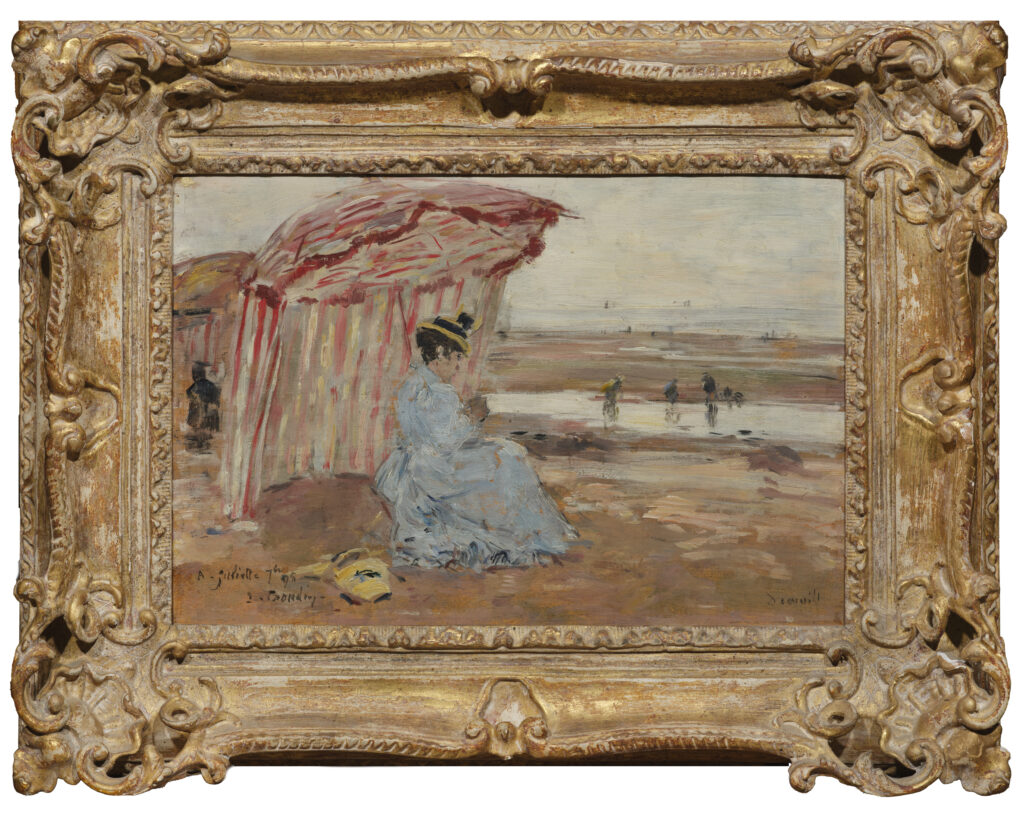
As mentioned earlier, Boudin took refuge in Belgium during the 1870–71 war. During that brief exile, he found success with his one historical work: The English Float Taking the Remaining Soldiers Buried in the Citadel (1871). Once the war ended, he returned to France, where he explored and painted under different skies. He didn’t much care for Bordeaux, but he painted some memorable pictures there, such as Bordeaux, Three Masts in the Port (1874), the sun revealed through the hazy sky. Though he claimed he dreaded traveling, he was always ready to pack his bags. In what turned out to be his last decade, he not only returned to familiar spots in Brittany and the Trouville and Deauville beaches, but also traveled for the first time to Villefranche-sur-Mer in the South of France and to Venice, which until then he only knew from closely studying Guardi’s paintings in the Louvre. He visited Venice first in 1892 and again in 1895. He wrote that the city had a greyish color, its water soft and misty. Venice, the Masted Ship at the Quay in the Giudecca Canal (1895) depicts a blue sky with floating clouds. Boudin said that Venice would be his “swan song,” and his paintings of the city end this attractive exhibition, which makes an ideal introduction to the artist for those who have yet to discover Boudin and which will enhance the pleasure of those who know his work already.














